Pairing Steak With Rosé Is the Pro Move You Should Try — Here’s Why
It's time to ditch some antiquated rules.
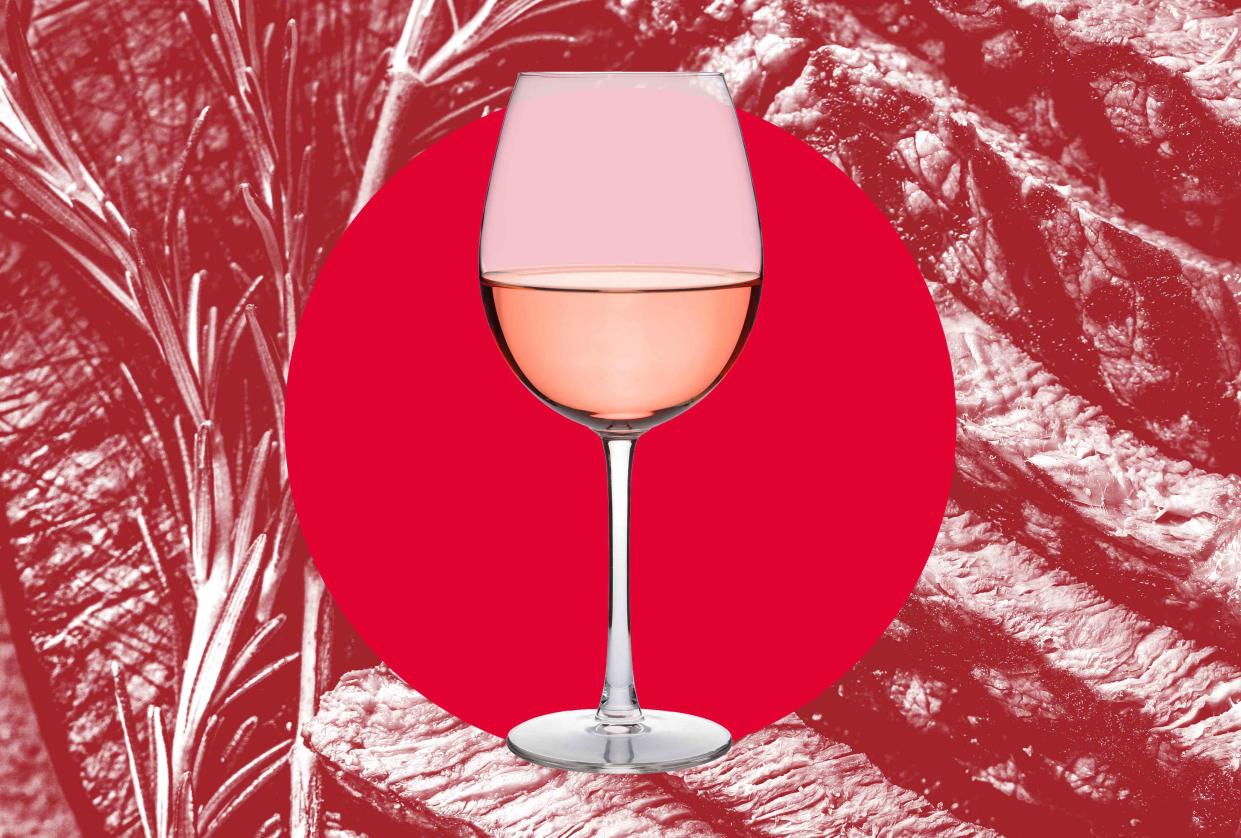
Food & Wine / Getty Images
The old concept that red wine should be served with meat while white wine goes with fish is a good rule for beginners — until you know when to break it — but where does that leave rosé?
Does it go well with salmon? (Probably.) Duck? (Likely.) How about...lamb? The answer with wine is that what you pair it with truly depends on your own personal preferences, not necessarily whether it’s fish or fowl.
“We all have different palates. What might be off-putting to me personally could be someone’s dream pairing. I just tell people to play around, have fun,” says Wanda Mann, the East Coast editor of The SOMM Journal and Tasting Panel magazines. “I think we have to give people the room and the space to experiment with wine, not give people all these rules. If you want some top ramen and rosé, a frozen pizza and rosé, chicken nuggets and rosé… I’m not here to judge people. It’s fun to see what other people love.”
And rosé wine, in particular, is beautiful with food. Made from crushed red grapes whose skins are left on for a period of just several hours or days during the maceration process, rosé is much lighter than its red cousin, while also having the ability to be more nuanced, structured, and versatile than white.
Related: To Drink Like the French, Serve Your Rosé Over Ice
“To make a good rosé is a challenge. It’s one of the most challenging things that a winemaker is able to do,” says Mann. “There are some paler rosés that have a lot of flavor. Think about it: How are they getting that flavor with so little maceration time on the skins, right? It really has to be precise when you’re harvesting, how much time you’re leaving them on the skins, how it’s aged. Winemakers have told me, ‘I love drinking rosé,’ but what they really love is the challenge of making it because to make a paler wine with some layers of flavor is really hard.”
Beyond the technicalities, there’s also an abundance of rosé in varying styles, which can make decision-making a challenge. “There are a lot of good options and it doesn’t have to be expensive,” says Mann, who will be speaking at the inaugural Food & Wine Classic in Charleston. Here, the former president of Les Dames d’Escoffier New York breaks it all down with some handy tips as you go on your rosé journey.
Color can provide visual cues — and with steak, you'll want a deeper red, which indicates ample skin contact
Rosé, which can be made with practically any red wine grape variety in a number of styles, is often thought of as light and fruit-forward — a summer wine meant for easy drinking rather than for pairing. But rosés can be quite complex and immensely pairable, running the gamut from dry to sweet, it’s just a matter of finding the right one for you. In the case of steak, you want a rosé with heft. And given how rosé is made, the main indicator of heft is color, which, by the way, has nothing to do with its sweetness level.
“Rosé is not a monolith. When we think about rosé, our first thought is that it’s really pale, crisp, and citrusy. But the beautiful thing about rosé is that it comes in many different styles,” says Mann. “So if I’m thinking about steak, I’m actually visualizing a darker rosé because that’s a cue to me that the wine has had sufficient skin contact. I want a rosé that’s slightly darker because it’s going to have a little more body, a little more grip, a little more tannin.”
Related: Shop Smarter: Here's How to Read a Wine Label Like a Pro
Tavel, an appellation in France's Southern Rhône, is one that Mann can always count on to work with something as substantial as steak. “It’s the only rosé-only appellation in France and is an appellation d’origine contrôlée (AOC),” she says. “It’s dry. It’s not as sweet. It’s a bold shade of pink. These wines actually age and can last two, three, four years, so they have some body and some weight.”
Beyond that, if your wine shop doesn’t carry Tavel, Mann says you can always ask if they have any rosés made in that style.
Grenache, Syrah, and Mourvèdre are your friends — but other big grapes work, too
In the absence of Tavel, consider the kind of robust grapes it’s made with and of other big grapes you’ve historically liked. “Tavel has Grenache, Syrah, and Mourvèdre — those are big, hearty grapes that can make for full-bodied reds,” Mann says. “I would look for rosés made from those grapes — and maybe even a Cabernet Sauvignon. If we go to Apulia in southern Italy, there’s Negroamaro; they have some nice dark rosés. Think of red grapes that you like and would normally pair with steak and see if there’s a rosé made from that grape — in a darker shade that indicates some skin contact,” advises Mann.
Rosé Champagne is an excellent option
Champagne, in general, is an immensely food-friendly wine that works with a great number of dishes, especially ones that are challenging to pair with still reds and whites, such as sushi and fried chicken. But a dark rosé Champagne, in particular, works exceptionally well with a beautifully marbled steak. “There are some darker rosé Champagnes out there like Laurent-Perrier — it’s a beautiful rosé and very gastronomic,” Mann says. “Those little scrubbing bubbles really work well with the fat, helping cleanse the palate.”
Develop a relationship with a wine shop you like
Knowing what grapes and rosé styles you prefer can certainly help you find a bottle you’ll likely love. But there’s a hitch: Wine labels don’t always disclose the composition of the wine within. That’s where your favorite caviste comes in.
“It’s so good to have a wine shop that you love — it is such an important partner in this. If you’re spending the money on a good steak, take the extra time,” Mann says. “Don’t just run into the store and grab the first rosé you see — have a conversation. It’ll take them five to 10 minutes to point you in the right direction. I would just avoid anything that’s super pale because it will probably not have enough weight.”
The 5 best rosés to pair with steak
One of the most important things to consider when pairing any wine is the fat content of the food it’s being sipped with. As a rule of thumb, fatty foods and rich dishes such as steak work best with wines that have some acidity to it, to help cut the grease and keep the palate fresh for the next bite. Here, Mann recommends five rosés to pair with several different cuts of steak.
Bone-in ribeye: Château d’Aqueria Tavel Rosé, Tavel, France ($24)
“An exclusively rosé appellation in France’s Southern Rhône, Tavel rosé wines are celebrated for their rich color and robust body," Mann says. "This beauty blends some pretty hearty grapes, including Grenache, Syrah, and Mourvèdre, that underwent an extended maceration to extract more color and flavor. It has the tannins, acidity, and heft needed to pair with the marvelously marbled and flavorful fat in my preferred cut, bone-in ribeye.”
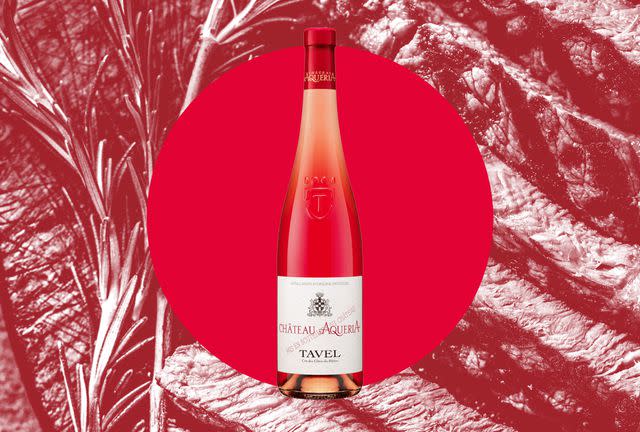
Food & Wine / Getty Images / Château d’Aqueria
Skirt steak and carne asada: Tablas Creek Dianthus Rosé, Paso Robles, California ($40)
“Dianthus was inspired by the bold rosés of the Southern Rhóne and is a blend of Mourvèdre, Grenache, Counoise, and Cinsault. The richness of the wine is balanced with a sea-breezy freshness that reflects its Central Coast origins," Mann says. "Really good carne asada tacos, loaded with thinly sliced and perfectly seasoned skirt steak, topped with all the fresh fixings — including the divisive cilantro — make a great pairing with Dianthus.”
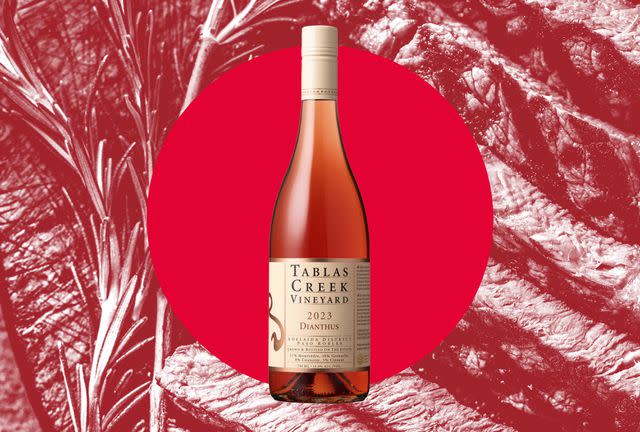
Food & Wine / Getty Images / Tablas Creek Vineyard
Steak tartare: Champagne Laurent-Perrier Cuvée Rosé, Champagne, France ($100)
“Since steak is in the name, can we agree that Steak Tartare counts? This classic dish of raw minced beef steak is both delicate and rich, the same words I would use to describe this timeless 100% Pinot Noir pink Champagne," Mann says. "The deep shade of pink is a good visual cue to the richness of this bubbly, but it also has impressive energy and precision. The bubbles and lively acidity slice through the richness of the tartare and ready your palate for the next bite.”
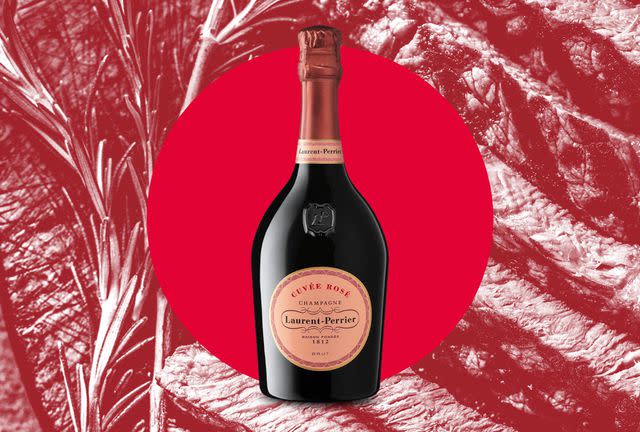
Food & Wine / Getty Images / Laurent‑Perrier
Pepper steak: Channing Daughters Rosato di Lagrein, The Hamptons, New York ($25)
“Hailing from Alto Adige, in the north of Italy, Lagrein is best known as a powerful and tannic red with long-aging potential," Mann says. "But winemaker and rosé lover Christopher Tracy, who made five different rosés in 2023, has revealed a flirty and fresh expression of Lagrein in his juicy Long Island rosé. The wine’s great structure, bright fruit, and hint of peppery spice make it a winning match with the juicy meat and crisp veggies in a pepper steak stir fry.”
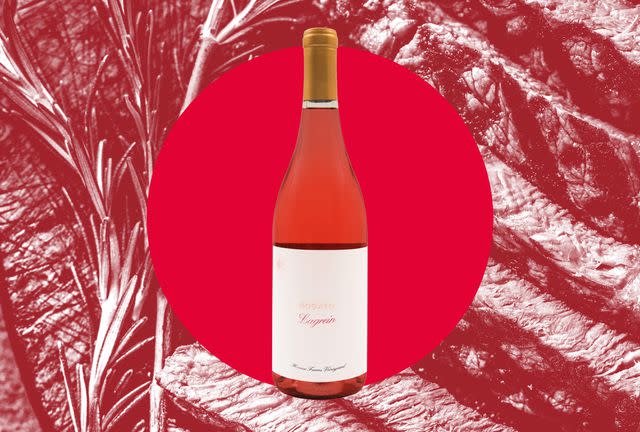
Food & Wine / Getty Images / Channing Daughters
Filet mignon: Chateau d’Esclans Garrus, Provence, France ($125)
“Who says a pale pink rosé from Provence can’t be both pretty and powerful? Made from a single vineyard of nearly 100-year-old Grenache vines, plus Rolle (Vermentino), and Syrah, Garrus was fermented and aged in large French oak barrels," Mann says. "Warm toasty notes add an elegant edge and verve to the bright fruit and crisp acidity, making it a great match with filet mignon. This tender and less fatty cut needs a wine that won’t overpower its more delicate nature but can enhance its relatively mild flavor.”
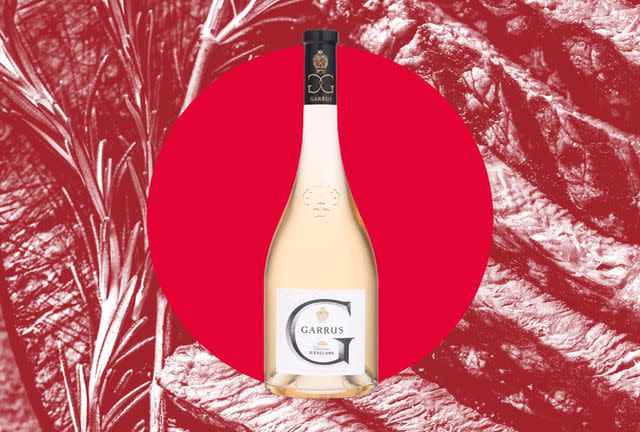
Food & Wine / Getty Images / THE CHÂTEAU D’ESCLANS ESTATE
For more Food & Wine news, make sure to sign up for our newsletter!
Read the original article on Food & Wine.









